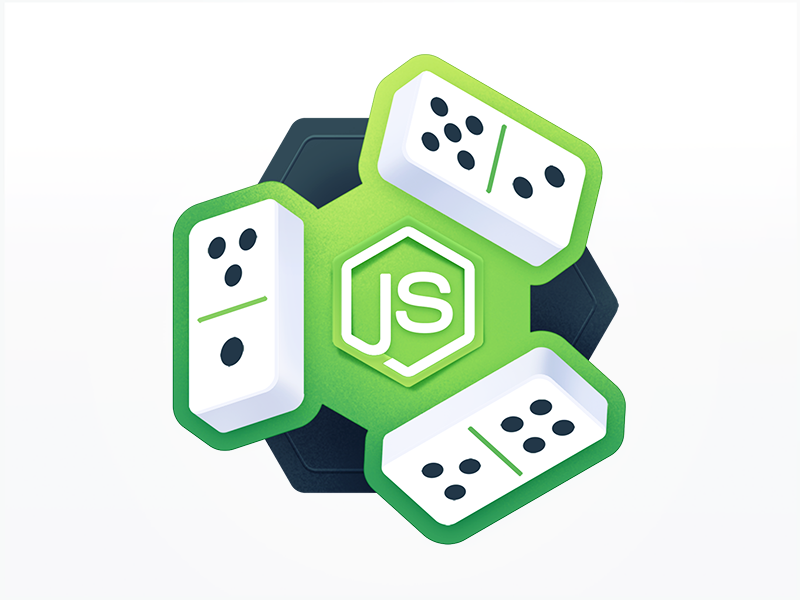JavaScript Objects
There are seven data types in JavaScript. Six of them are called “primitive”, because their values contain only a single thing (be it a string or a number or whatever). In contrast, objects are used to store keyed collections of various data and more complex entities. In JavaScript, objects penetrate almost every aspect of the language. So we must understand them first before going in-depth anywhere else. An object can be created with figure brackets {…} with an optional list of properties. A property is a “key: value” pair, where key is a string (also called a “property name”), and value can be anything. We can imagine an object as a cabinet with signed files. Every piece of data is stored in its file by the key. It’s easy to find a file by its name or add/remove a file.

Objects, in JavaScript, is it’s most important data-type and forms the building blocks for modern JavaScript. These objects are quite different from JavaScript’s primitive data-types(Number, String, Boolean, null, undefined and symbol) in the sense that while these primitive data-types all store a single value each (depending on their types). Objects are more complex and each object may contain any combination of these primitive data-types as well as reference data-types. An object, is a reference data type. Variables that are assigned a reference value are given a reference or a pointer to that value. That reference or pointer points to the location in memory where the object is stored. The variables don’t actually store the value. Loosely speaking, objects in JavaScript may be defined as an unordered collection of related data, of primitive or reference types, in the form of “key: value” pairs. These keys can be variables or functions and are called properties and methods, respectively, in the context of an object. An object can be created with figure brackets {…} with an optional list of properties. A property is a “key: value” pair, where a key is a string (also called a “property name”), and value can be anything.
#2. Working with Objects
Objects in JavaScript, just as in many other programming languages, can be compared to objects in real life. The concept of objects in JavaScript can be understood with real life, tangible objects. In JavaScript, an object is a standalone entity, with properties and type. Compare it with a cup, for example. A cup is an object, with properties. A cup has a color, a design, weight, a material it is made of, etc. The same way, JavaScript objects can have properties, which define their characteristics.
#3. Objects and Properties

A JavaScript object has properties associated with it. A property of an object can be explained as a variable that is attached to the object. Object properties are basically the same as ordinary JavaScript variables, except for the attachment to objects. The properties of an object define the characteristics of the object. You access the properties of an object with a simple dot-notation:.
objectName.propertyName#3. Working with Objects
Odit voluptatibus, eveniet vel nihil cum ullam dolores laborum, quo velit commodi rerum eum quidem pariatur! Quia fuga iste tenetur, ipsa vel nisi in dolorum consequatur, veritatis porro explicabo soluta commodi libero voluptatem similique id quidem? Blanditiis voluptates aperiam non magni. Reprehenderit nobis odit inventore, quia laboriosam harum excepturi ea.
#4.Two main kinds of Data
Note: According to MDN, a primitive (a.k.a. primitive value or primitive data type) is any data that is not an object and has no methods
This being said, in JavaScript, there are 6 primitive data types:
- number,
- string,
- boolean,
- null,
- undefined,
- symbol (latest added in ECMAScript2015)
We will come back to the immutability but for now, keep in mind that all primitive data types are immutable.
#5. A number as Data Type
Using numbers, we can represent integers and floating-point numbers in JavaScript.
const age = 34;
const price = 12.99;
Number as data type also support a special numeric values: NaN and Infinity. We really don’t have to go in details here but NaN is something that you’ll see throughout this course so let’s explain a bit.
We will come back to the immutability but for now, keep in mind that all primitive data types are immutable.
Number as data type also support a special numeric values: NaN and Infinity. We really don’t have to go in details here but NaN is something that you’ll see throughout this course so let’s explain a bit.Number as data type also support a special numeric values: NaN and Infinity. We really don’t have to go in details here but NaN is something that you’ll see throughout this course so let’s explain a bit.
Nan stands for Not a Number and it represents a computational error. It is a result of an incorrect mathematical operation, such as:
const name = "Sandra";
// <== string data type
const whatIsThis = name/2;
console.log(whatIsThis); // ==>
NaN
Obviously NaN is not a number like any other, it just belongs to this data type. It is very important to keep in mind that if you get NaN and you expected to get a number after some mathematical operation, there’s a good chance you are trying to apply incorrect math operation on top of string or some other data type (that’s not a nymber).

John Doe
Lorem ipsum dolor sit amet, consectetur adipisicing elit. Pariatur quidem laborum necessitatibus, ipsam impedit vitae autem, eum officia, fugiat saepe enim sapiente iste iure! Quam voluptas earum impedit necessitatibus, nihil?
Reply
John Doe
Lorem ipsum dolor sit amet, consectetur adipisicing elit. Pariatur quidem laborum necessitatibus, ipsam impedit vitae autem, eum officia, fugiat saepe enim sapiente iste iure! Quam voluptas earum impedit necessitatibus, nihil?
Reply
John Doe
Lorem ipsum dolor sit amet, consectetur adipisicing elit. Pariatur quidem laborum necessitatibus, ipsam impedit vitae autem, eum officia, fugiat saepe enim sapiente iste iure! Quam voluptas earum impedit necessitatibus, nihil?
Reply
John Doe
Lorem ipsum dolor sit amet, consectetur adipisicing elit. Pariatur quidem laborum necessitatibus, ipsam impedit vitae autem, eum officia, fugiat saepe enim sapiente iste iure! Quam voluptas earum impedit necessitatibus, nihil?
Reply
John Doe
Lorem ipsum dolor sit amet, consectetur adipisicing elit. Pariatur quidem laborum necessitatibus, ipsam impedit vitae autem, eum officia, fugiat saepe enim sapiente iste iure! Quam voluptas earum impedit necessitatibus, nihil?
Reply
John Doe
Lorem ipsum dolor sit amet, consectetur adipisicing elit. Pariatur quidem laborum necessitatibus, ipsam impedit vitae autem, eum officia, fugiat saepe enim sapiente iste iure! Quam voluptas earum impedit necessitatibus, nihil?
Reply